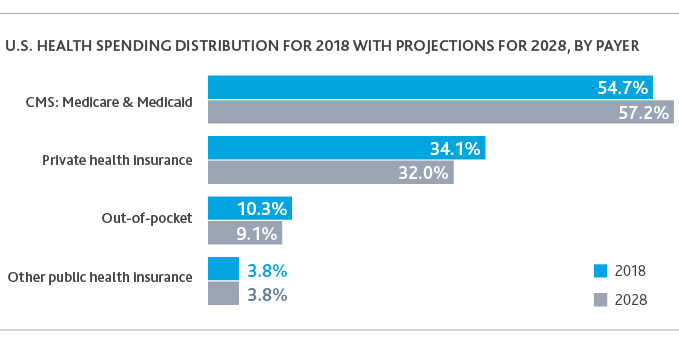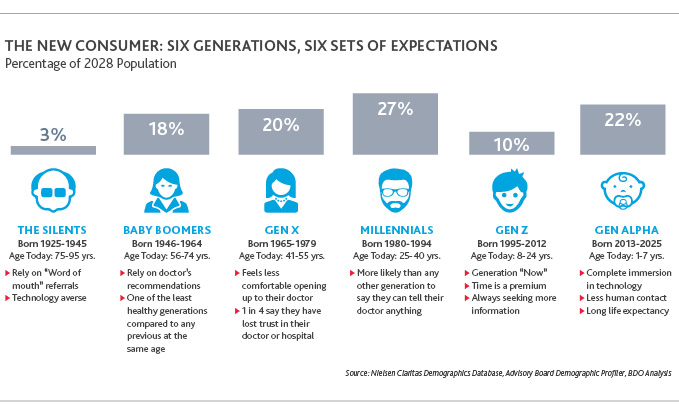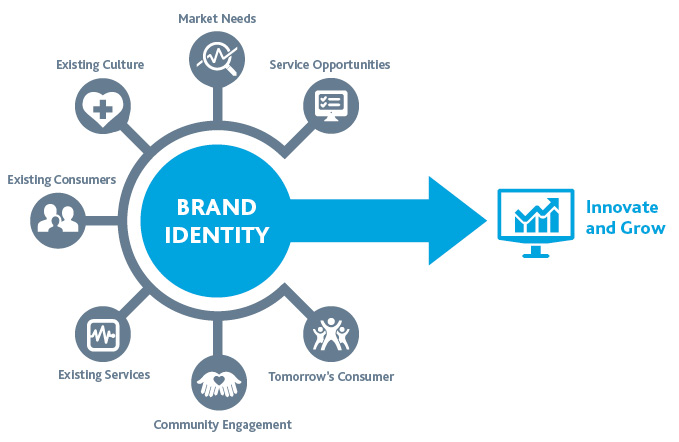Unlocking the ROI of an Integrated Patient Experience
Sustained clear communication of authentic patient satisfaction directly improves financial viability.
Gone are the days when patient experience may have been an afterthought of hospitals. Now, their long-term financial viability depends on prioritizing it first.
Hospitals of all sizes and affiliations have demonstrated a remarkable ability to persevere through the COVID-19 pandemic, which came at a time when the healthcare industry was already undergoing profound change. As hospitals focus on what’s next, the path to sustainable financial viability requires a commitment to healthy patient outcomes and investment in the patient experience.
BDO’s Quick Take: 3 Key Benefits of Investing into the Patient Experience
1. Maximize reimbursement through improved HCAHPS patient satisfaction scores
Improving financial viability requires a multi-pronged approach, focusing on arrangements with physician-referrers, cost take-out and improved reimbursement. Hospital executives and boards have limited time and investment funds resulting in a zero-sum game of competing initiatives. BDO brings clarity and cohesion to the quest for financial stability by unlocking the financial and clinical return-on-investment from every dollar and hour spent on patient satisfaction.
Based on BDO’s analysis of reimbursement drivers, 60% of the factors affecting the amount and timeliness of reimbursement can be improved by creating a positive patient experience. Patient experience, in turn, can be measurably and reliably improved by focusing on specific workflow optimization, training and communication strategies. Therefore, a rigorous focus on a positive patient experience—which advances physician, institutional, community and reimbursement drivers—yields the highest ROI available to many hospitals. More importantly, improved patient experience leads to better health outcomes for patients.
Through both financial incentives and public disclosure, the Hospital Value-Based Purchasing program is rewarding (or penalizing) hospitals based on patient experience scores. Every reimbursement dollar is critical to financial health, including Medicare reimbursements tied to the patient satisfaction portion of the Hospital Consumer Assessment of Healthcare Providers and Systems (HCAHPS) survey. Poor survey scores result in hospitals forfeiting a portion of potentially eligible Centers for Medicare & Medicaid Services (CMS) reimbursements. CMS currently withholds 1% of Medicare payments, 30% of which are tied to HCAHPS survey scores. Since the Medicare population is projected to increase from 54 million beneficiaries today to more than 80 million beneficiaries by 2030 (amounting to more than 25% of health spending by 2028), CMS will only become a more dominant payer for providers. This makes maximizing available reimbursement to the fullest an even more urgent business imperative for hospitals and other providers.

Source: CMS:CHCF 2020 https://www.statista.com/statistics/247517/projected-health-spending-distribution-in-the-us-2013-2024-by-payer/
2. Increase consumer confidence, outreach and referrals through elevated Star Ratings.
In addition to influencing CMS reimbursement share, patient experience impacts a hospital’s Star Rating and resulting brand reputation. CMS publishes HCAHPS Star Ratings on its Hospital Compare website, updated quarterly. Star Ratings make it easier for patient consumers to identify excellence in healthcare quality. Research demonstrates a direct association between an organization’s brand reputation and its ability to capitalize on market share and reimbursement.
Additionally, today’s healthcare providers are currently challenged with responding to the COVID-19 impact on consumer confidence at a time when health consumers require more tailored (and occasionally competing) approaches.

3. A carved out competitive advantage.
Due to the widespread and ongoing impacts of the COVID-19 pandemic, hospitals that have struggled in recent years may find themselves with a very narrow opening to compete on an even playing field with previously untouchable rivals. Investing in patient satisfaction can yield a competitive advantage, for example, when promoting a return to elective cases that represent significant volume and associated revenue margin.
Doctors and hospital executives may debate whether patient satisfaction is truly an indicator of quality; however, improving patient experience ratings is beneficial for patients and clinicians for several reasons that impact the bottom line:
Hospitals that have better engagement with patients may encourage greater adherence to clinical standards of care and follow‑up.
Providers who focus on patient satisfaction and overall experience will likely impact patient volume more than technical acumen alone.
Significant portions of reimbursement and revenue growth are attained via repeat patient visits. Patients seen in hospital settings are typically chronically or acutely ill and observant of the type of care and attention they receive while in the facility. When given a choice, patients visit hospitals they trust to provide the best experience and outcomes—and they share this information with other patients via word of mouth and online reviews.
Although the HCAHPS survey typically measures data relating to the patients’ perspectives of their care experiences, it can also shed light on how hospitals can improve processes relevant to care quality. The patient satisfaction survey provides feedback that guides hospitals in policies and procedures and allows patients to have a voice in their own healthcare. Informed by survey data, hospital leaders can invest in the training and education of care teams, initiating procedures to make the patient experience better in terms of both effectiveness and affordability while increasing employee engagement across the organization.
How BDO Can Help You Capitalize on Those Benefits
BDO can assist hospitals and providers in evaluating how to engage with various patient groups. We aid providers in using patient experience feedback as a valuable tool to develop strategies that restore and gain market share. BDO can additionally assist with workflow optimization as well as workforce training and education to improve communication scores that compose more than 60%of the HCAHPs patient satisfaction survey. Leveraging results of internal, third-party and HCAHPS surveys, we pinpoint the sources of patient dissatisfaction and create specific actionable recommendations for hospital leaders. Based on successful outcomes, we work with hospitals to promote their improved patient experience through a refreshed brand identity strategy to reintroduce services to the community.

During a time in which our health care system and its providers are facing significant strife because of COVID-19, patient experience has never been more critical to the long-term success and survival of a hospital. At BDO, we understand that ultimately, patients are customers who can and will take their business anywhere that offers a better experience aligned to their expectations and definition of value. We work closely with each hospital to discuss how we can support raising patient satisfaction scores and as result, maximize market share and reimbursements with a rigorous focus on what’s next for the business of healthcare.
SHARE